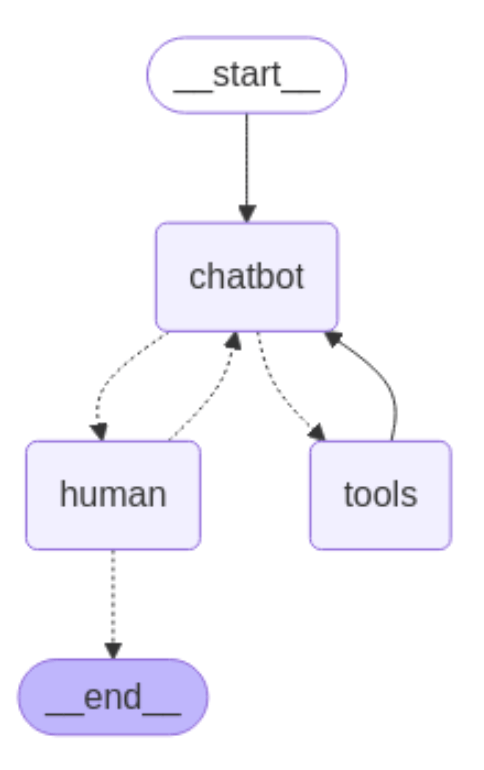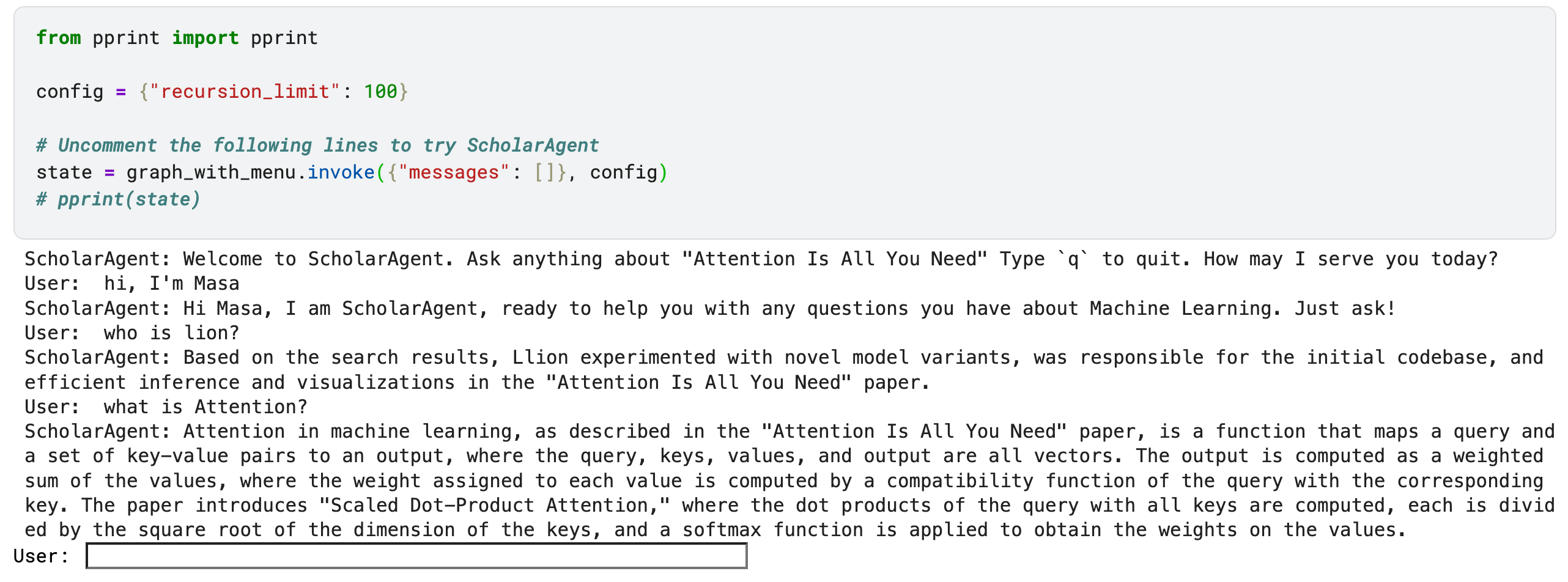ScholarAgent: Making Machine Learning Research Accessible with Generative AI
Introduction
Understanding complex machine learning research papers can be daunting, especially for learners without a strong academic background. ScholarAgent bridges this gap by enabling users to ask questions about the seminal paper “Attention Is All You Need” and receive clear, conversational answers powered by Generative AI.
This blogpost explores how ScholarAgent leverages cutting-edge Gen AI capabilities to simplify dense academic content, making it accessible to students, developers, and enthusiasts alike.
ScholarAgent - https://www.kaggle.com/code/masa373dev/capstone-scholaragent
The Problem: Accessibility of Research Papers
Machine learning research papers are often written in dense, technical language, making them inaccessible to many learners. This creates a barrier to understanding foundational concepts like the Transformer architecture introduced in “Attention Is All You Need”.
How ScholarAgent Solves This Problem
ScholarAgent uses Generative AI to break down complex content into digestible insights. By combining Retrieval-Augmented Generation (RAG), vector search, and agent orchestration, ScholarAgent provides an interactive way to explore and understand research papers.
Key Features and Implementation

1. Document Processing with Google Gen AI Embedding Model
ScholarAgent processes the research paper by embedding its content using Google's Gen AI Embedding model. The embeddings are stored in ChromaDB, a vector database optimized for fast and accurate searches.
# Embed the PDF(research paper) using Gemini and store in ChromaDB
from chromadb import Documents, EmbeddingFunction
class GeminiEmbeddingFunction(EmbeddingFunction):
def __call__(self, input: Documents):
response = client.models.embed_content(
model="models/text-embedding-004",
contents=input,
)
return [e.values for e in response.embeddings]
embed_fn = GeminiEmbeddingFunction()
# Initialize the ChromaDB client and create a collection
chroma_client = chromadb.Client()
db = chroma_client.get_or_create_collection(name=DB_NAME, embedding_function=embed_fn)
db.add(documents=chunked_documents, ids=[str(i) for i in range(len(chunked_documents))])
2. Retrieval-Augmented Generation (RAG)
When a user asks a question, ScholarAgent retrieves the most relevant chunks of the paper from ChromaDB. These chunks are then used as context for generating a natural language response.
# Query the vector database for relevant chunks
result = db.query(query_texts=["What is a Transformer?"], n_results=3)
retrieved_chunks = result["documents"]
3. Response Generation with Gemini 2.0 Flash
The retrieved context is passed to Gemini 2.0 Flash, which generates a conversational response tailored to the user's query.
# Initialize agent model with tools
llm = ChatGoogleGenerativeAI(model="gemini-2.0-flash")
llm_with_tools = llm.bind_tools([search_info])
# Generate a response using Gemini 2.0 Flash
response = llm_with_tools.invoke([retrieved_chunks])
4. Agent-Orchestrated Function Calling with LangGraph
ScholarAgent uses LangGraph to orchestrate complex workflows, such as rephrasing queries or chaining multiple steps. This ensures a seamless user experience.
from langgraph.graph import StateGraph
from IPython.display import Image
graph_builder = StateGraph(BotState)
# Define the nodes
graph_builder.add_node("chatbot", chatbot_node_with_tools)
graph_builder.add_node("human", human_node)
graph_builder.add_node("tools", tool_node)
# Define the edges
graph_builder.add_conditional_edges("chatbot", maybe_route_to_tools)
graph_builder.add_conditional_edges("human", maybe_exit_human_node)
graph_builder.add_edge("tools", "chatbot")
graph_builder.add_edge(START, "chatbot")
graph_with_menu = graph_builder.compile()
Image(graph_with_menu.get_graph().draw_mermaid_png())

Results and Impact
ScholarAgent demonstrates the following Generative AI capabilities:
- Document Understanding: Embedding and processing dense academic content.
- RAG: Retrieving relevant information to answer user queries.
- Agent Orchestration: Managing complex workflows for enhanced interactivity.
By making research papers accessible, ScholarAgent empowers learners to explore advanced concepts like the Transformer architecture interactively.
Limitations and Future Directions
Current Limitations
- Domain-Specific Knowledge: The model's understanding is limited to the embedded content.
- Scalability: Processing large documents can be resource-intensive.
- Contextual Understanding: Responses may lack depth for highly nuanced questions.
Future Improvements
- Multi-Paper Support: Extend ScholarAgent to handle multiple research papers.
- Enhanced Contextual Awareness: Improve response quality by integrating external knowledge sources.
- Interactive Visualizations: Add diagrams and flowcharts to explain complex concepts.
Conclusion
ScholarAgent showcases how Generative AI can make advanced research accessible to a broader audience. By leveraging RAG, vector search, and agent orchestration, it transforms dense academic content into interactive, conversational insights.
Try ScholarAgent today and explore the groundbreaking concepts behind “Attention Is All You Need”!
# Launch the chatbot
state = graph_with_menu.invoke({"messages": []})

Call to Action
Have questions about the Transformer architecture? Start chatting with ScholarAgent and experience how Generative AI can simplify complex research!
ScholarAgent - https://www.kaggle.com/code/masa373dev/capstone-scholaragent